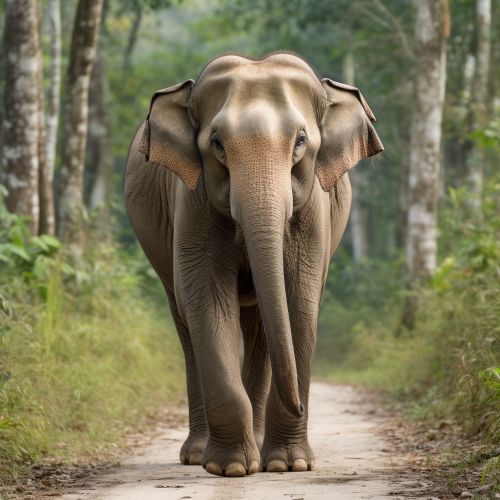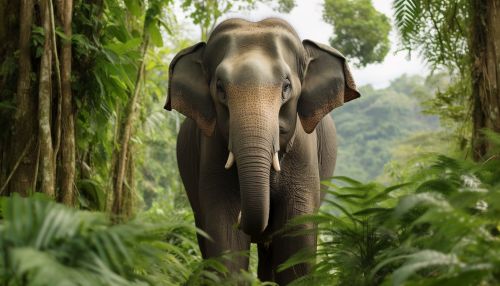Asian Elephant
Taxonomy and Evolution
The Asian Elephant (Elephas maximus), also known as the Asiatic elephant, is the only living species of the genus Elephas and is distributed throughout the Indian subcontinent and Southeast Asia, from India in the west, Nepal in the north, Sumatra in the south, and to Borneo in the east. Three subspecies are recognized — E. m. maximus from Sri Lanka, E. m. indicus from mainland Asia, and E. m. sumatranus from the island of Sumatra.


Asian elephants are the closest living relatives of the woolly mammoth, sharing a common ancestor that lived between 6.7 and 6.0 million years ago. The Asian elephant and the African elephant (Loxodonta africana and Loxodonta cyclotis) diverged from a common ancestor around 7.6 million years ago.
Description
Asian elephants are large herbivores with grey skin, which is covered in a sparse coat of hair. Adult males stand between 2.75 m (9.0 ft) and 3.5 m (11.5 ft), while females are slightly smaller. Asian elephants have a more arched back than African elephants, and the highest point of the body is on the head. The ears are smaller than those of African elephants, and the skull is larger.
The trunk, a fusion of the nose and upper lip, is a versatile appendage. Asian elephants have a single "finger" at the tip of their trunk, compared to African elephants which have two. The trunk is used for breathing, smelling, touching, grasping, and sound production.
Behavior and Ecology
Asian elephants are highly social animals. They form close bonds and family units, which are made up of related females and their offspring. These family units are led by the oldest and often largest female, known as the matriarch. Males leave these family groups when they reach puberty.
Asian elephants are herbivores, feeding on a diet of grasses, leaves, shoots, barks, and fruits. They can consume up to 150 kg (330 lb) of food per day and require a large amount of water for drinking and bathing.
Conservation
Asian elephants are listed as Endangered on the IUCN Red List due to habitat loss, degradation, and fragmentation. Their population has declined by at least 50% over the last three generations. The demand for ivory, which is harvested from their tusks, is a significant threat to their survival. Conservation efforts are focused on reducing poaching and human-elephant conflict and protecting their habitat.
Cultural Significance
Asian elephants have a rich cultural history in Asia. They are featured in various forms of art, literature, and folklore. They are also revered in religion and are often associated with wisdom and longevity. In many cultures, they are used in ceremonial and religious events.
